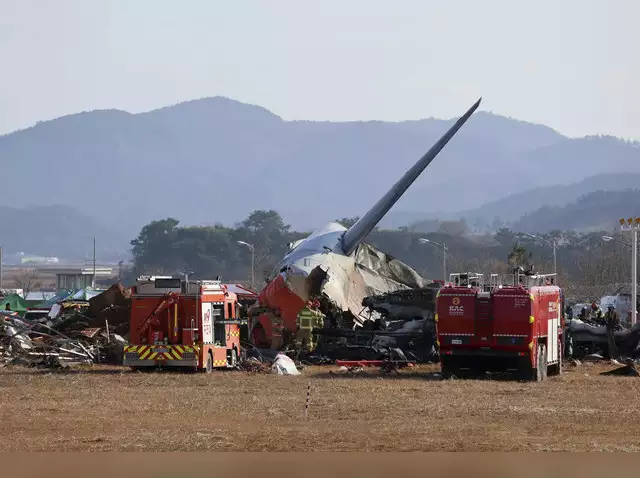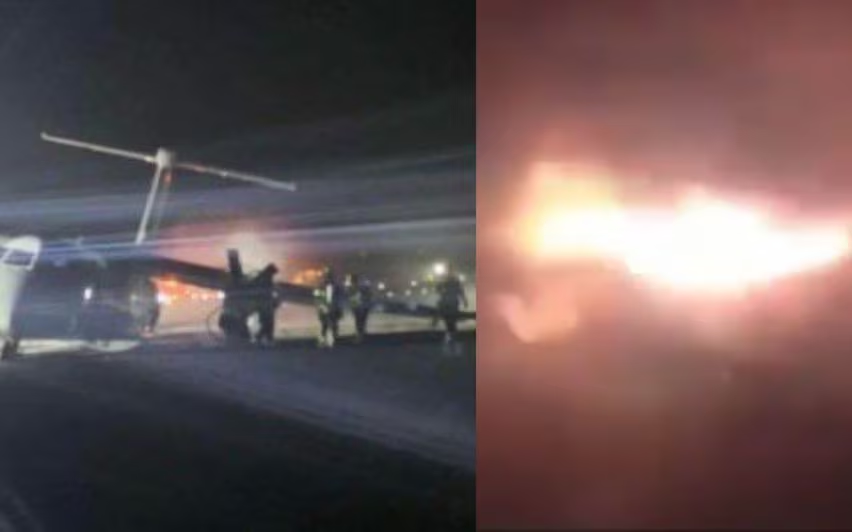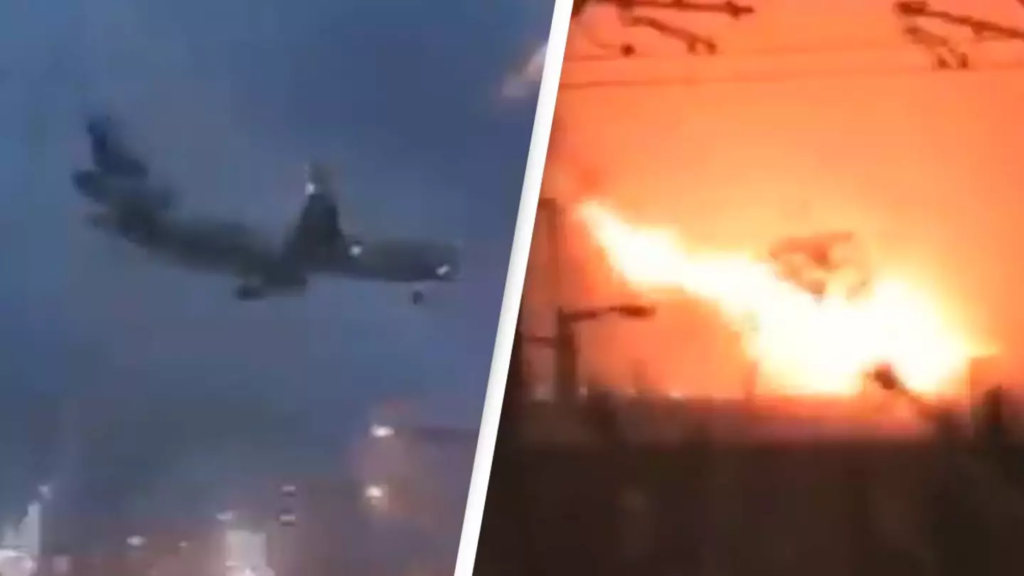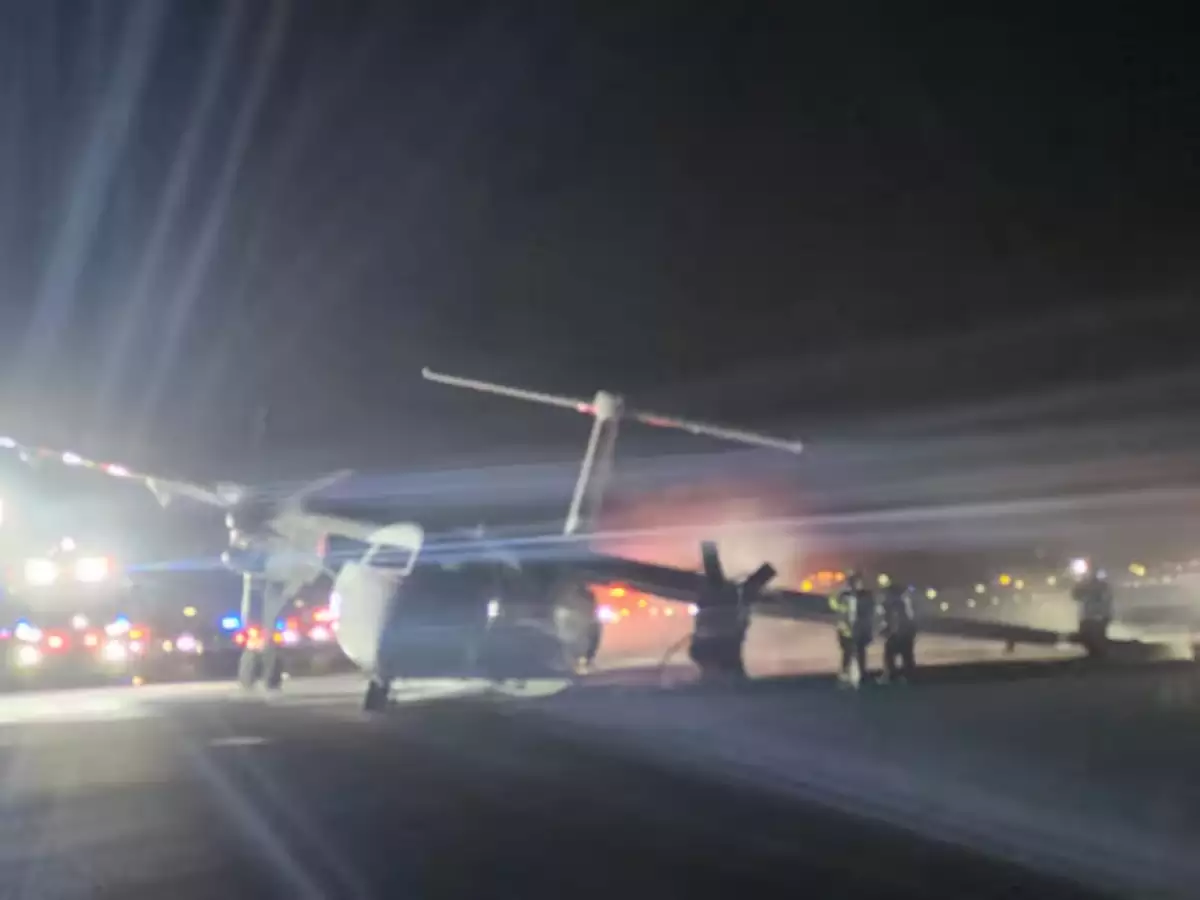In a shocking and unsettling sequence of events, an Air Canada Plane Catches Fire at Halifax Stanfield International Airport, hours after a tragic plane crash in South Korea.
While the incident in Canada did not result in any fatalities, the fire was a stark reminder of the inherent dangers of air travel. This emergency situation comes on the heels of a devastating accident in South Korea, where a Jeju Air flight crashed, resulting in the deaths of 179 people.
The two incidents have raised questions about the safety of aviation operations, particularly concerning landing gear malfunctions, which were identified as a contributing factor in both cases.
Air Canada Flight AC2259: Emergency Landing Turns into a Blaze
On Sunday, the passengers aboard Air Canada flight AC2259 experienced a frightening ordeal when the aircraft was forced to make an emergency landing at Halifax Stanfield International Airport.
The flight, operated by PAL Airlines, was en route to St. John’s from Halifax. Upon approach to land, the plane’s landing gear malfunctioned, causing the aircraft to skid uncontrollably down the runway. As the aircraft scraped against the tarmac, its wings caused sparks that ignited a fire, engulfing part of the plane in flames.
Despite the terrifying situation, the swift and effective response of the emergency teams ensured that there were no casualties. The fire was promptly contained, and all passengers and crew were evacuated safely.
Fortunately, none of the 150 passengers and five crew members on board were harmed, though the distressing scenes of fire and smoke on the runway were a stark reminder of the risks inherent in aviation.
Read : Canadians Interested in Trump’s Plan to Merge Canada-US: O’Leary
While the exact cause of the landing gear failure remains under investigation, early reports suggest that the malfunction led to the plane’s inability to land safely.
🚨🇨🇦 BREAKING: AIR CANADA FLIGHT LANDS WITH BROKEN LANDING GEAR IN HALIFAX, MINOR INJURIES REPORTED
— Mario Nawfal (@MarioNawfal) December 29, 2024
An Air Canada flight reportedly made an emergency landing at Halifax airport after its landing gear failed.
Despite the malfunction, only minor injuries were reported among… pic.twitter.com/HCtnrwzg9p
The plane’s landing gear reportedly failed during the approach, and this malfunction caused the aircraft to veer off its designated path on the runway. The subsequent fire, which ignited after the plane’s wings scraped along the ground, further heightened the severity of the emergency landing.
Following the event, the aircraft was inspected, and it was confirmed that no major structural damage occurred, other than the damage caused by the fire.
Emergency responders quickly worked to douse the flames, preventing the fire from spreading and ensuring that all passengers and crew were evacuated without incident. The passengers were later transferred to another flight, and the situation was described as “under control,” with no reports of injuries.
Jeju Air Crash in South Korea: A Fatal Tragedy
The Air Canada incident occurred just hours after a devastating crash in South Korea. On the same day, a Jeju Air Boeing 737, carrying 181 people, crashed upon landing at Muan Airport.
A malfunction in the aircraft’s landing gear, caused by a bird strike, led to the plane veering off the runway and colliding with a fence. The crash resulted in a catastrophic explosion that claimed the lives of at least 179 people, with only two survivors pulled from the wreckage.
Initial reports from South Korean news outlets confirmed that 28 people had died, but as rescue operations continued, the death toll increased steadily. The exact cause of the explosion is still under investigation, but authorities have suggested that the bird strike, which caused the landing gear malfunction, played a significant role in the tragic outcome.
The survivors of the crash are currently receiving medical attention, but the scale of the disaster is deeply troubling, particularly considering the high number of fatalities.

Jeju Air, a major budget airline in South Korea, was operating the ill-fated Boeing 737 on a domestic flight. The aircraft, which had just completed its approach to Muan Airport, was caught off-guard by a bird strike, an unfortunate but not uncommon event in aviation.
The bird strike damaged the plane’s landing gear, causing it to lose control as it touched down. As the plane skidded off the runway, it collided with a fence, triggering an explosion that devastated the aircraft and resulted in massive loss of life.
This tragedy has sparked renewed discussions about the safety of landing gear systems and emergency procedures in the aviation industry. While bird strikes are often unavoidable, they highlight the need for better safety measures and improved technologies to minimize their impact on aircraft landings.
The Jeju Air crash has left many questioning whether the aviation industry is doing enough to protect passengers from such catastrophic events, particularly when landing gear malfunctions are involved.
Aviation Safety and the Need for Stronger Regulations
The simultaneous occurrences of these two aviation incidents have reignited concerns about the safety of the aviation industry. Both cases—Air Canada’s emergency landing and Jeju Air’s fatal crash—highlight the critical role of landing gear systems in aircraft safety.
The failure of landing gear, whether due to mechanical issues or external factors like bird strikes, can have devastating consequences. In both incidents, landing gear malfunctions led to catastrophic events, one resulting in a miraculous escape for passengers, while the other ended in a tragic loss of life.
Landing gear is a vital component of every aircraft, responsible for supporting the weight of the aircraft during takeoff, landing, and taxiing. Any malfunction in this system can result in severe consequences, as seen in both the Air Canada and Jeju Air incidents.

Aviation experts have long called for enhanced safety protocols and more stringent regulations regarding the maintenance and inspection of landing gear systems. As incidents like these highlight, even minor malfunctions can escalate quickly into life-threatening situations.
The aviation industry’s reliance on older aircraft, some of which may not meet the latest safety standards, is also a matter of concern. Although the global aviation industry has made significant strides in improving safety in recent years, incidents like these show that more work remains to be done.
In both cases, the aircraft in question were reportedly well-maintained, but external factors such as bird strikes or mechanical failures still played a crucial role in the accidents.
Therefore, better detection systems, maintenance procedures, and emergency landing protocols are needed to mitigate the risks posed by landing gear failures and other mechanical malfunctions.
Furthermore, the Air Canada incident and the Jeju Air crash have sparked debates about the need for international aviation standards and cooperation. While the two events occurred in different parts of the world, they share common threads: both involved landing gear malfunctions, and both resulted in major safety concerns.
Enhanced communication between aviation authorities across the globe could help identify emerging risks and improve overall safety standards in the industry.

The two major aviation incidents—Air Canada’s emergency landing in Halifax and the tragic Jeju Air crash in South Korea—serve as stark reminders of the potential dangers involved in air travel.
While the Air Canada flight had a miraculous outcome, with no casualties reported, the South Korean crash has left 179 people dead, highlighting the deadly consequences of landing gear malfunctions.
The incidents raise critical questions about aviation safety, particularly concerning the durability and maintenance of landing gear systems, as well as emergency procedures in case of failure.
As the aviation industry continues to evolve, it is essential to improve safety measures, particularly in response to landing gear failures and other mechanical issues.
The events of this fateful day in aviation history should prompt a global reassessment of how to prevent such accidents and protect passengers from similar tragedies in the future. While both incidents serve as sobering reminders, they also provide valuable lessons for the ongoing improvement of air travel safety.

